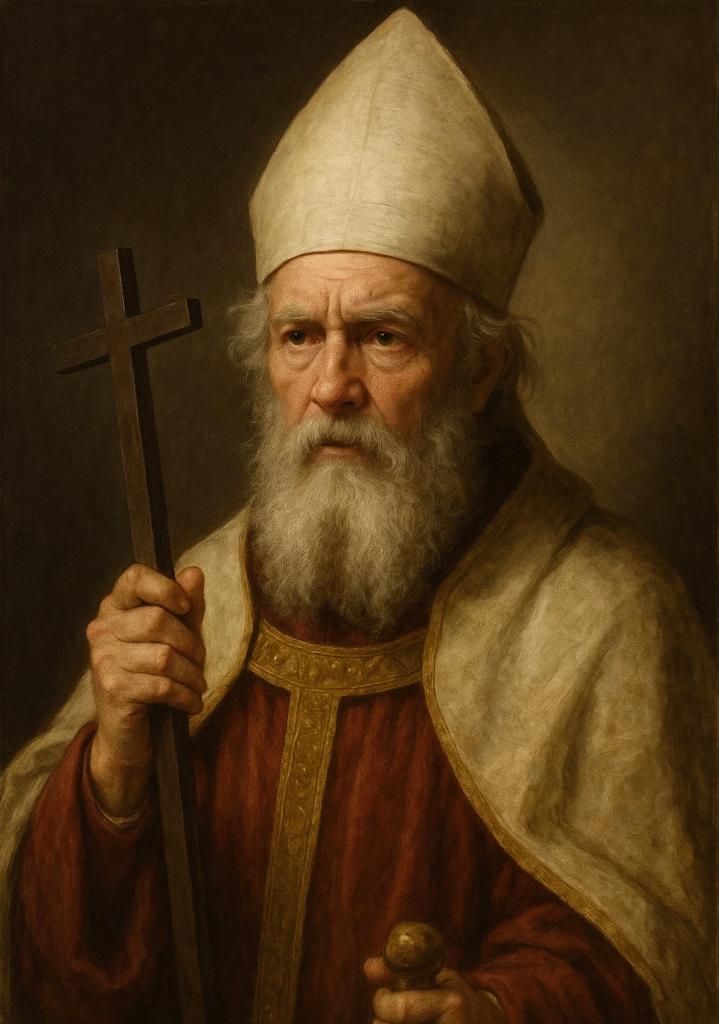“A Bishop, a Chalice, and a Martyr: How St. Ignatius of Antioch Shattered My Modern Christianity”
✝️ Introduction
For 42 years, I was a contented Evangelical Christian. I loved Jesus. I read Scripture. I worshiped with sincerity. But something didn’t sit right. Questions bubbled under the surface: Where is the Church that Jesus built? Why are there so many interpretations of the same Bible? And why does communion feel so different from what early Christians seemed to describe?
Then I read St. Ignatius of Antioch.
And within hours, I was 87% converted to the ancient Christian faith.
🧱 Who Was St. Ignatius of Antioch?
Ignatius wasn’t just any early Christian. He was the third bishop of Antioch, a city where followers of Jesus were first called “Christians” (Acts 11:26). Tradition tells us he was a disciple of the Apostle John, making him a direct spiritual grandchild of Christ Himself.
Around 107 AD, Ignatius was arrested and sent to Rome to face martyrdom. On the way, he wrote seven powerful letters to Christian communities across the Roman Empire. These are among the earliest Christian writings outside the New Testament—and they rocked my world. Don’t take my word for it Read it for your self. >>>> Read the origninal Doctuments from a man that was tortured and died for his faith.
🍞 The Eucharist Is Not Just a Symbol
In Evangelicalism, communion was meaningful, but symbolic. Just a remembrance. But Ignatius wrote this:
“They abstain from the Eucharist and from prayer because they do not confess that the Eucharist is the flesh of our Savior Jesus Christ.”
— Letter to the Smyrnaeans 7:1
Not represents. Not reminds us of. He says it is Christ’s flesh. The earliest Christians believed that in the mystery of the Eucharist, we encounter Christ bodily—not figuratively. This isn’t medieval theology. This is first-century, straight-from-a-disciple-of-John Christianity.
🧾️ No Bishop, No Church
Then came another shock:
“Let no one do anything that pertains to the Church without the bishop… Wherever the bishop appears, there let the people be; as wherever Jesus Christ is, there is the Catholic Church.”
— Smyrnaeans 8:1-2
Wait, what? The early Church wasn’t a loose spiritual movement. It was a visible, hierarchical body, centered around the bishop. Not just any leader, but one ordained in apostolic succession, tracing their authority back to the apostles.
Ignatius even says it’s not lawful to celebrate the Eucharist without the bishop or his delegate.
🕋 The One, Holy, Catholic and Apostolic Church
What hit me hardest was this: If the early Church required bishops in apostolic succession to guard the sacraments, then the Church of the apostles still exists, and I had never been part of it.
That’s when the search began. I needed a bishop—a real bishop. Not someone who just called themselves one, but a man whose ordination could be traced back, bishop by bishop, to the apostles.
Less than two months after reading Ignatius, I found myself serching for the church that he speaks about.
🛡️ Why This Matters
Why does this ancient martyr’s writing matter today?
Because it forces us to ask: Is my version of Christianity the same one the apostles practiced and passed down? Or have we inherited a faith fragmented by time, interpretation, and innovation?
St. Ignatius doesn’t offer suggestions. He declares realities. Real Eucharist. Real bishops. Real Church.
🔭 A Journey Begins
This is just the first step in the Ancient Christian Faith Series. We’ll explore what the early Church believed, how it worshiped, and why—if we’re serious about following Christ—we must also be serious about following the Church He established.
And that Church?
It has bishops.
It has sacraments.
And it’s still here.

